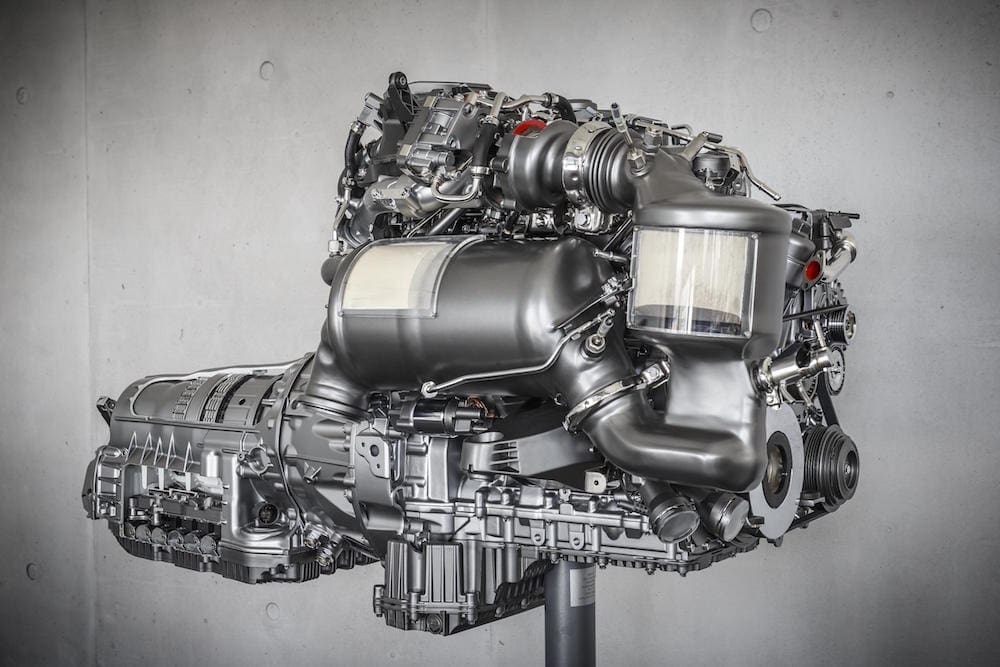



“The new family of engines embodies over 80 years of Mercedes-Benz diesel know-how. The new premium diesels are more efficient and powerful, lighter and more compact – and they are designed to meet all future global emissions standards,” said Prof. Dr. Thomas Weber, member of the Daimler Board of Management with responsibility for Group Research and Head of Mercedes-Benz Cars Development. “In our opinion, the diesel engine is indispensable in trucks and cars if we want to further reduce the CO2 emissions from traffic.”
In the two decades since 1995, the average consumption of the passenger car fleet where Mercedes is concerned has fallen by almost half from 9.2 l/100 km (230 g CO2 /km) to 5.0 l/100 km (125 g CO2/km). Already today, Mercedes-Benz Cars has 68 models that emit less than 120 g/km – and 108 models with the efficiency label A+ or A.
The modular family of engines will be used across the entire range of Mercedes-Benz cars and vans. There are plans for several output variants as well as longitudinal and transverse installation in vehicles with front-, rear- and all-wheel drive.


The new engine in the E 220 d delivers around 13 percent lower fuel consumption and CO2 emissions along with a further increase in output (192 BHP instead of 168 BHP).
Among the important innovations are its all-aluminium construction, steel pistons with stepped combustion bowls, NANOSLIDE cylinder coating, fourth-generation common rail injection, a big weight saving (168.4 kg vs. 202.8 kg, a reduction of 17 per cent), and a reduced two-litre displacement instead of 2.15 litres with cylinder spacing of 90 mm vs. 94 mm making for more compact overall dimensions.
The new diesel engine is designed to meet future emissions legislation (RDE – Real Driving Emissions). In contrast to the current NEDC measurement cycle, the WLTP (Worldwide harmonized Light vehicles Test Procedure) cycle is aimed at ensuring that the figures for standard and real-world consumption are close together in future. In addition, it is planned in Europe to introduce a measuring procedure for Real Driving Emissions (RDE).
All components of relevance for efficient emissions reduction are installed directly on the new engine, which is equipped with multiway exhaust gas recirculation (EGR). This combines cooled high-pressure and low-pressure EGR. It makes it possible to significantly further reduce the untreated emissions from the engine across the entire engine map, with the centre of combustion being optimised for fuel economy.
The exhaust gas from the turbocharger is sent first to a diesel oxidation catalyst. It next passes the downdraft mixer, in which AdBlue is added by means of a water-cooled dosing module. Thanks to a specially developed mixing area, the AdBlue evaporates over the shortest possible distance in the exhaust gas stream and is distributed very uniformly on the surface of the downstream sDPF (particulate filter with coating to reduce nitrogen oxides). Positioned behind the sDPF is an SCR catalyst for further catalytic reduction of the nitrogen oxides. Only then does the treated exhaust gas enter the exhaust system.
© Motorworld Media 2023
Registered Office: 4 Capricorn Centre, Cranes Farm Road, Basildon, Essex. SS14 3JJ
Company Number: 8818356
Website designed by Steve Dawson